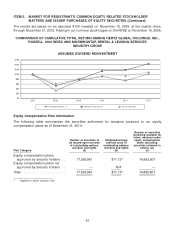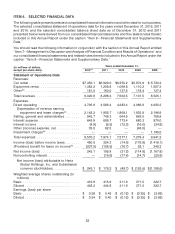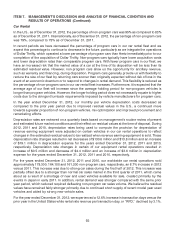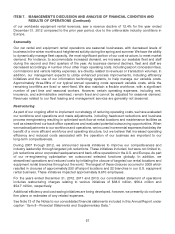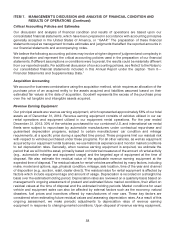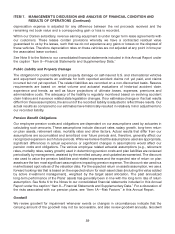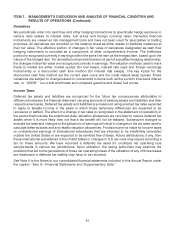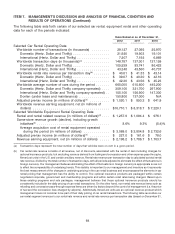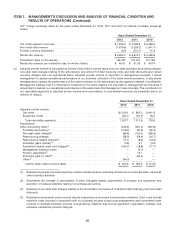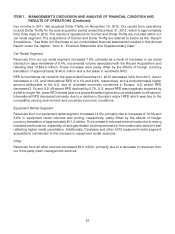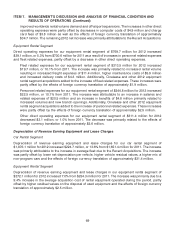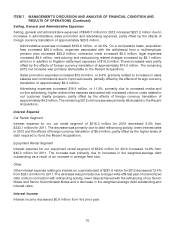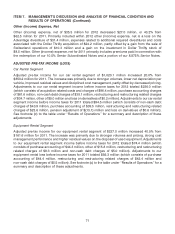Hertz 2012 Annual Report Download - page 85
Download and view the complete annual report
Please find page 85 of the 2012 Hertz annual report below. You can navigate through the pages in the report by either clicking on the pages listed below, or by using the keyword search tool below to find specific information within the annual report.ITEM 7. MANAGEMENT’S DISCUSSION AND ANALYSIS OF FINANCIAL CONDITION AND
RESULTS OF OPERATIONS (Continued)
Derivatives
We periodically enter into cash flow and other hedging transactions to specifically hedge exposure to
various risks related to interest rates, fuel prices and foreign currency rates. Derivative financial
instruments are viewed as risk management tools and have not been used for speculative or trading
purposes. All derivatives are recorded on the balance sheet as either assets or liabilities measured at
their fair value. The effective portion of changes in fair value of derivatives designated as cash flow
hedging instruments is recorded as a component of other comprehensive income. The ineffective
portion is recognized currently in earnings within the same line item as the hedged item, based upon the
nature of the hedged item. For derivative instruments that are not part of a qualified hedging relationship,
the changes in their fair value are recognized currently in earnings. The valuation methods used to mark
these to market are either market quotes (for fuel swaps, interest rate caps and foreign exchange
instruments) or a discounted cash flow method (for interest rate swaps). The key inputs for the
discounted cash flow method are the current yield curve and the credit default swap spread. These
valuations are subject to change based on movements in items such as the London inter-bank offered
rate, or ‘‘LIBOR,’’ our credit worthiness and unleaded gasoline and diesel fuel prices.
Income Taxes
Deferred tax assets and liabilities are recognized for the future tax consequences attributable to
differences between the financial statement carrying amounts of existing assets and liabilities and their
respective tax bases. Deferred tax assets and liabilities are measured using enacted tax rates expected
to apply to taxable income in the years in which those temporary differences are expected to be
recovered or settled. The effect of a change in tax rates is recognized in the statement of operations in
the period that includes the enactment date. Valuation allowances are recorded to reduce deferred tax
assets when it is more likely than not that a tax benefit will not be realized. Subsequent changes to
enacted tax rates and changes to the global mix of earnings will result in changes to the tax rates used to
calculate deferred taxes and any related valuation allowances. Provisions are not made for income taxes
on undistributed earnings of international subsidiaries that are intended to be indefinitely reinvested
outside the United States or are expected to be remitted free of taxes. Future distributions, if any, from
these international subsidiaries to the United States or changes in U.S. tax rules may require recording a
tax on these amounts. We have recorded a deferred tax asset for unutilized net operating loss
carryforwards in various tax jurisdictions. Upon utilization, the taxing authorities may examine the
positions that led to the generations of those net operating losses. If the utilization of any of those losses
are disallowed a deferred tax liability may have to be recorded.
See Note 9 to the Notes to our consolidated financial statements included in this Annual Report under
the caption ‘‘Item 8—Financial Statements and Supplementary Data.’’
61


